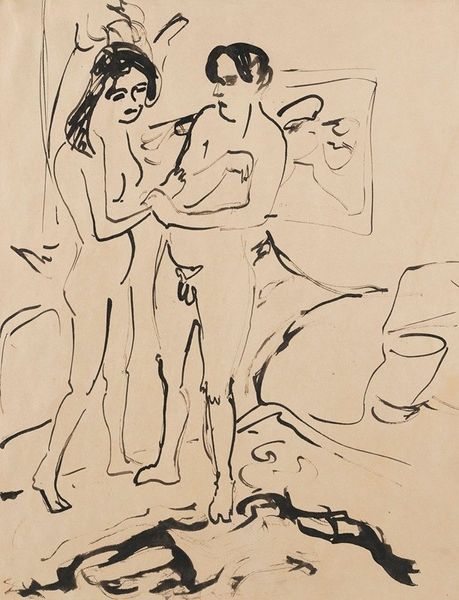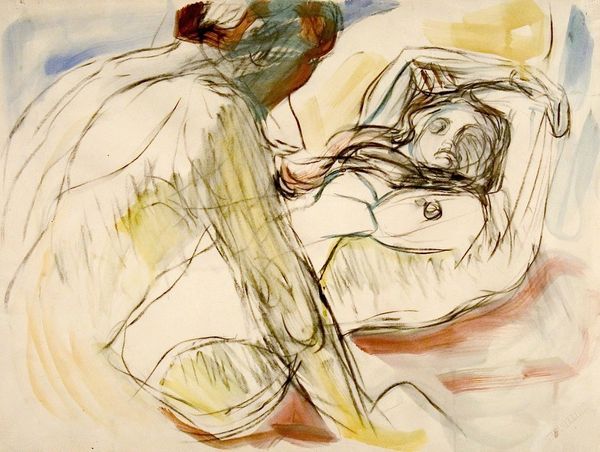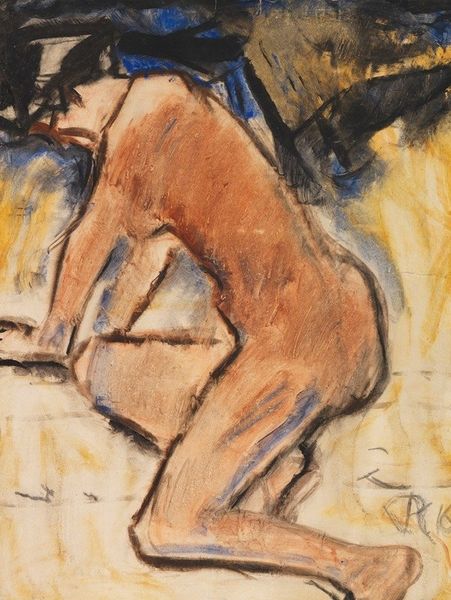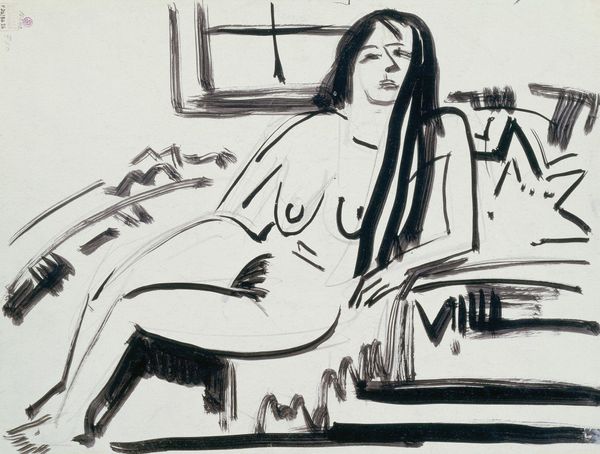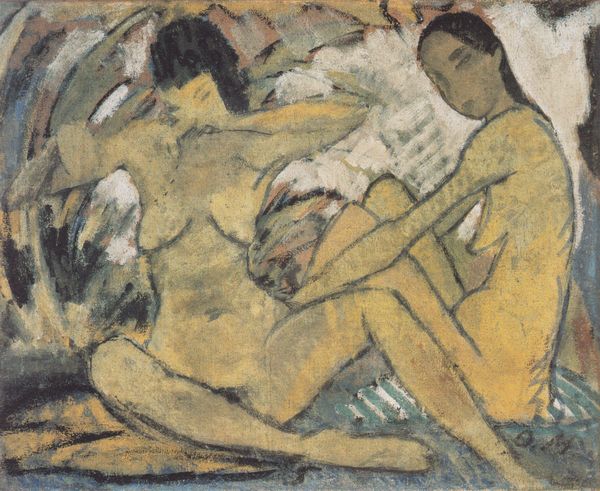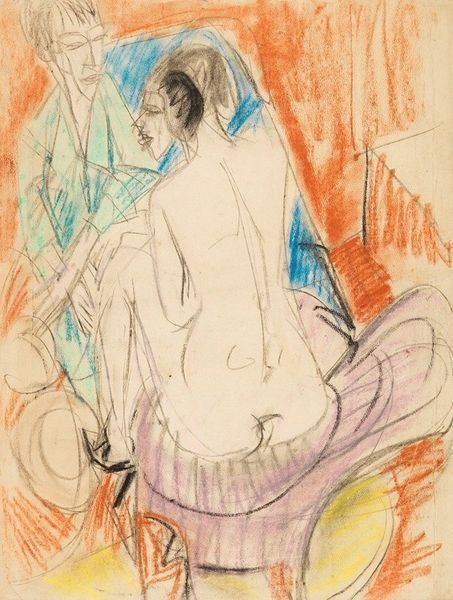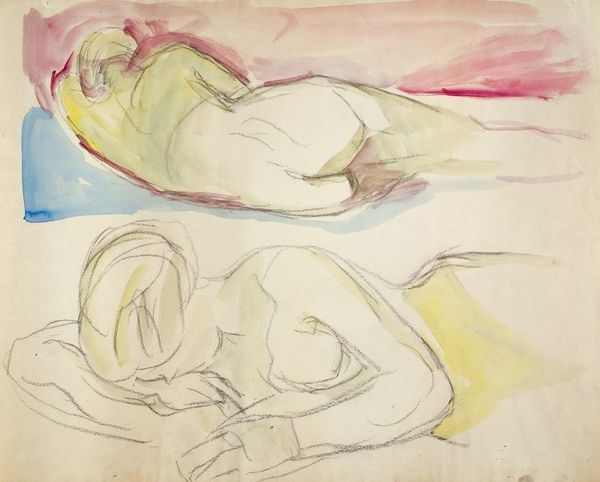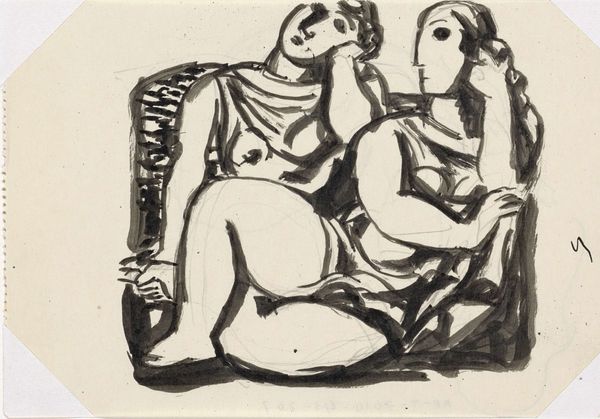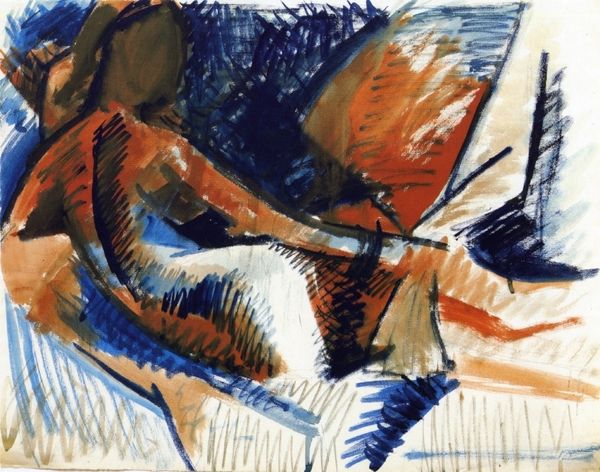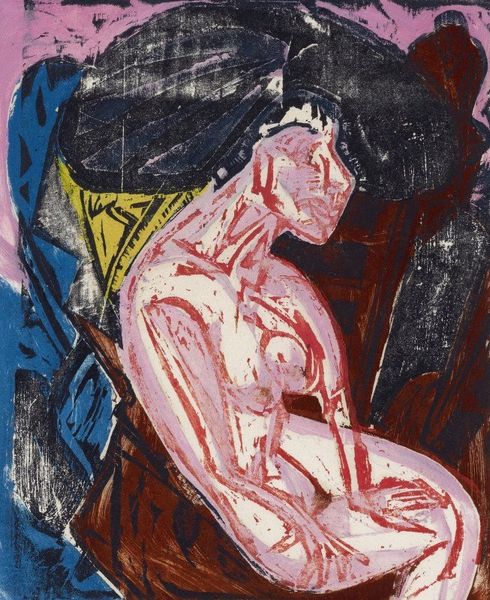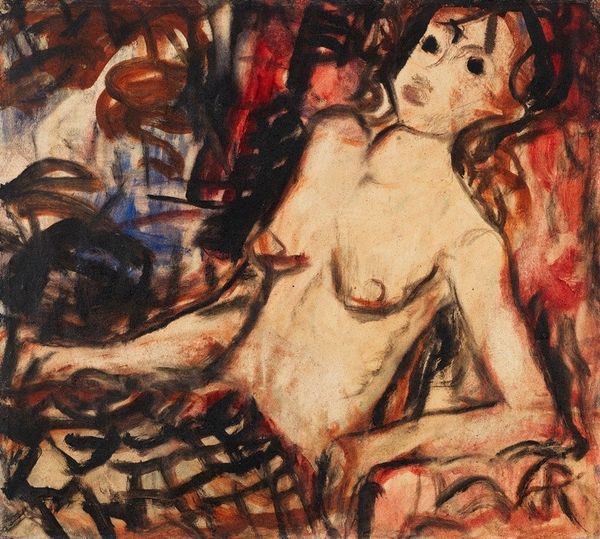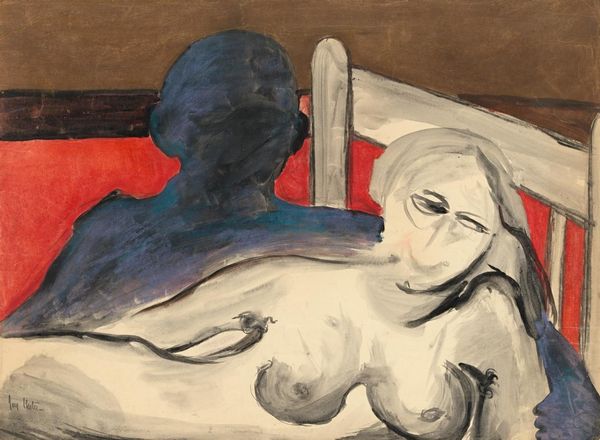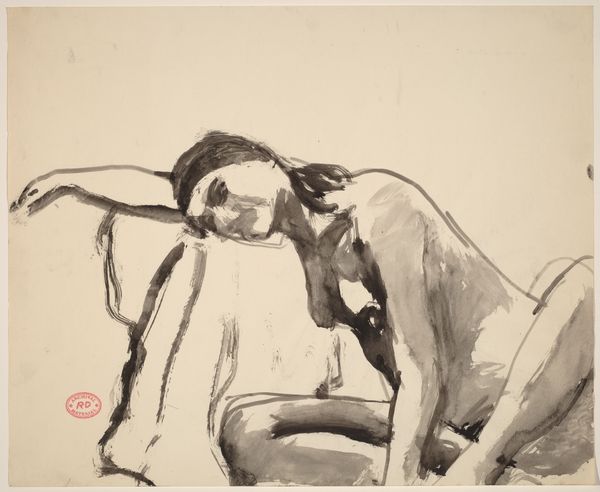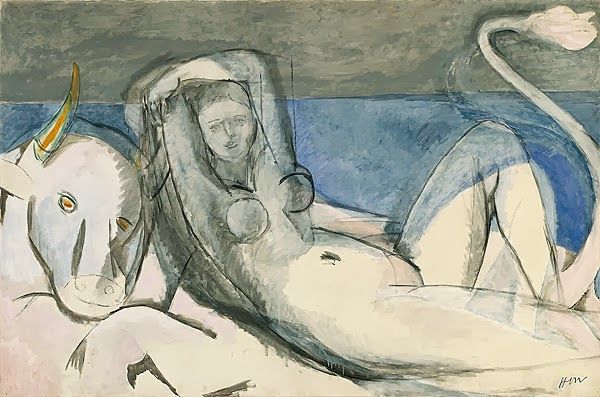
drawing, ink
#
drawing
#
ink drawing
#
self-portrait
#
german-expressionism
#
figuration
#
ink
#
expressionism
#
line
#
nude
Copyright: Public Domain: Artvee
Editor: We’re looking at Ernst Ludwig Kirchner’s "Two Seated Women in Studio" from 1912, rendered in ink. There's a raw, almost frantic energy in the lines. What stands out to you in terms of its creation? Curator: I immediately notice the emphasis on the process, the visibility of the artist’s hand. The medium itself – ink – lends to the sketch-like quality, challenging any notions of polished, finished art. Kirchner here uses materials in a direct way; think of it as honest labor transferred to paper. Editor: Honest labor, interesting! The loose, scratchy lines definitely speak to the immediacy. Curator: Exactly. And the very choice of materials implies a commentary on the traditional expectations surrounding the "nude" genre. Are we looking at mere representation or something else? What is he *doing* with this subject, the means by which he renders them? Editor: You mean like, is he making a comment on art’s function, through both form and what is depicted? Curator: Precisely. This era saw shifting ideas around mass production, industrial materials and manual production methods. It could be an argument *for* manual work. Even a type of intimacy… the labor being evident *is* the piece. Editor: I hadn't considered that. So, Kirchner is not just depicting figures; he's highlighting the act of creating, the human touch in art. Curator: Exactly. It's less about the subject and more about the means of production and their relation to art’s market. What can a simple choice like ink, over oils, say? Editor: This makes me look at it in an entirely new way, valuing the process and social message embedded in this seemingly simple ink drawing. Curator: Indeed, hopefully you and listeners consider these things now more.
Comments
No comments
Be the first to comment and join the conversation on the ultimate creative platform.
